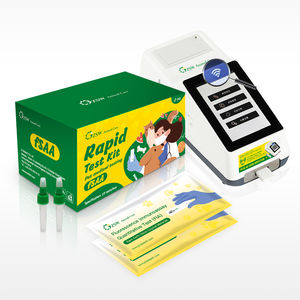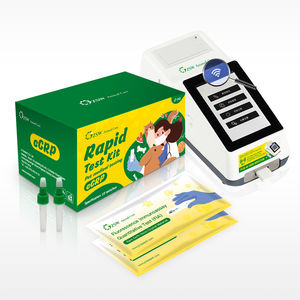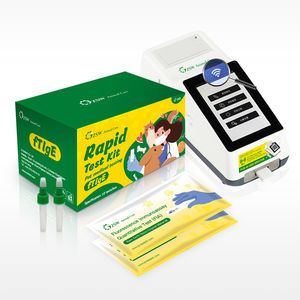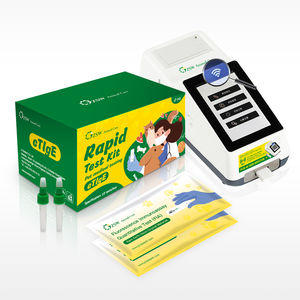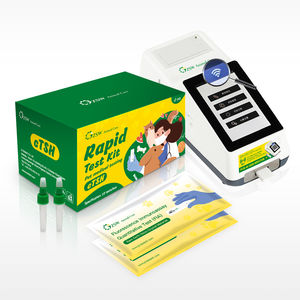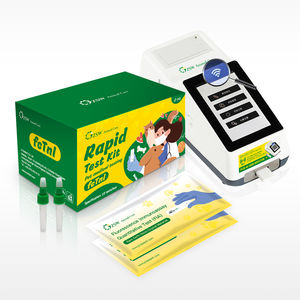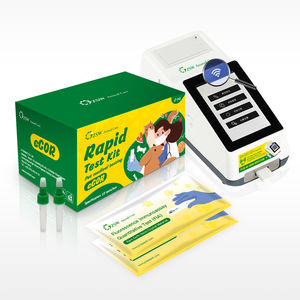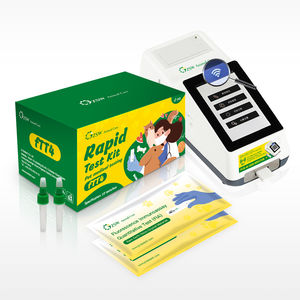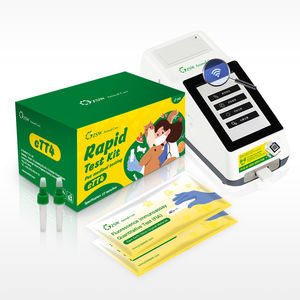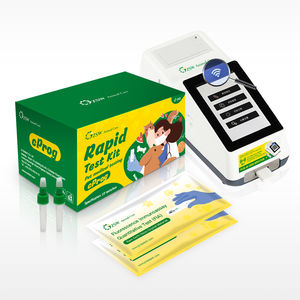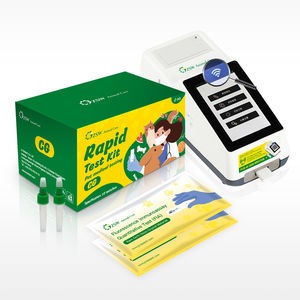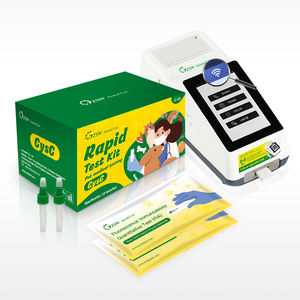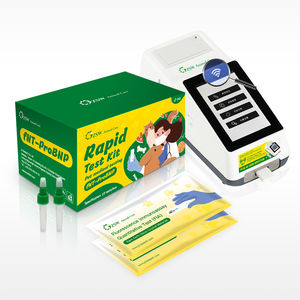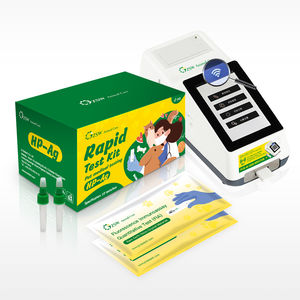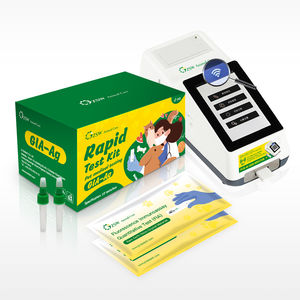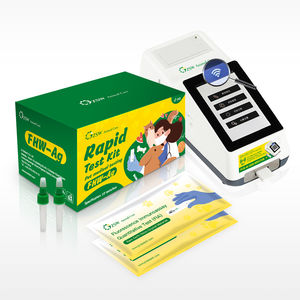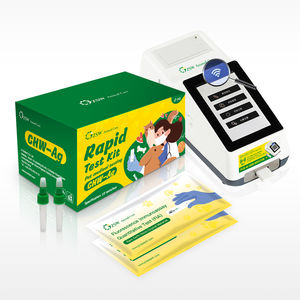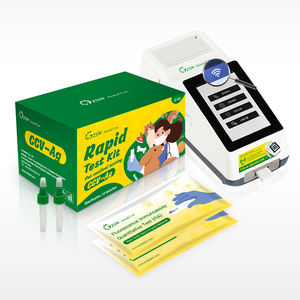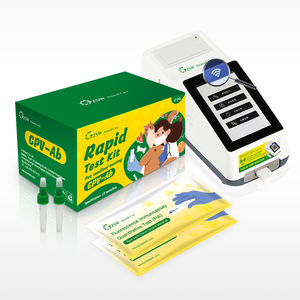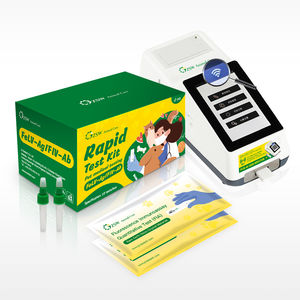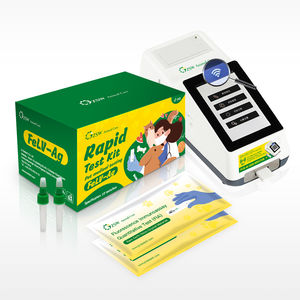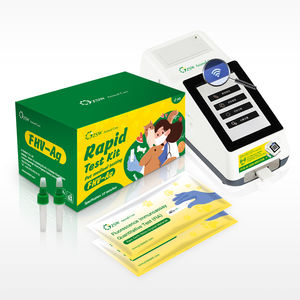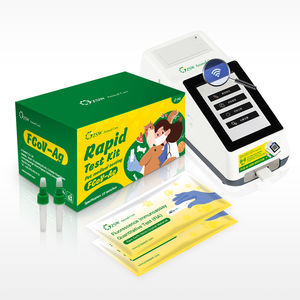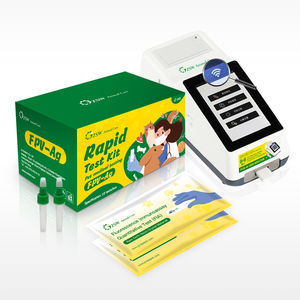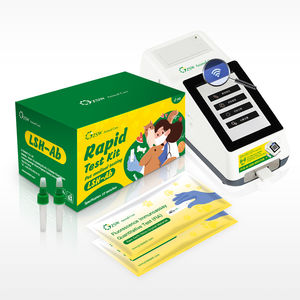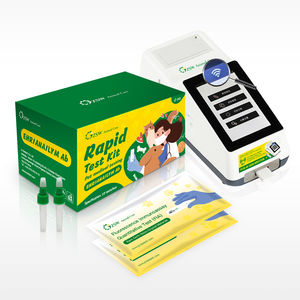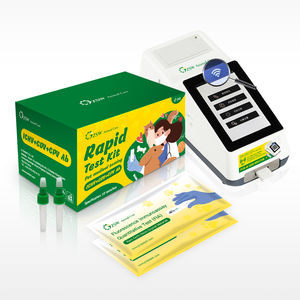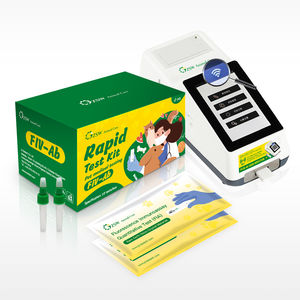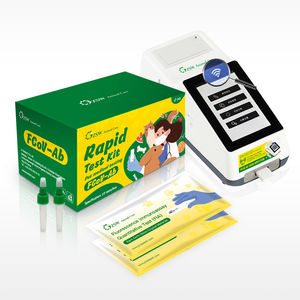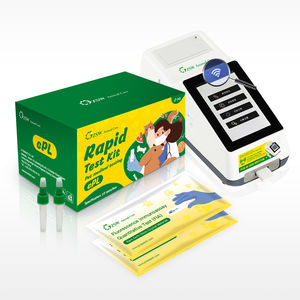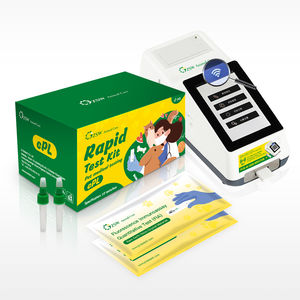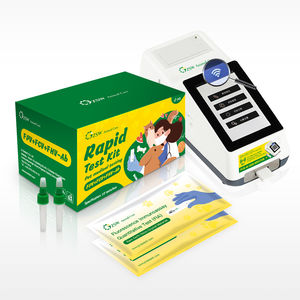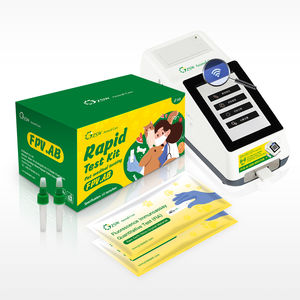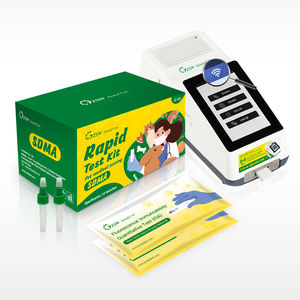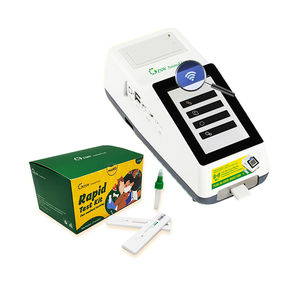
- Company
- Products
- Catalogs
- News & Trends
- Exhibitions
Herpes test kit FHV Abpneumoniaveterinaryfor felines

Add to favorites
Compare this product
Characteristics
- Applications
- herpes, pneumonia
- Application field
- veterinary
- Patient type
- for felines
- Tested parameter
- IgG
- Micro-organism
- FHV
- Sample type
- clinical, blood
- Analysis mode
- immunochromatographic, fluorescence
- Result display time
10 min
- Sample volume
0.01 ml
(0.00034 US fl oz)
Description
This product uses fluorescence immunochromatography to quantitatively detect the FHV IgG antibody content in cat blood. Basic principle: T and C lines are marked on the nitrocellulose membrane. The binding pad is sprayed with fluorescent nanomaterial markers that can specifically recognize FHV IgG antibodies. The FHV IgG antibodies in the sample are first combined with the nanomaterial markers to form a complex, and then chromatograph upward. The complex binds to the T line. When illuminated by light, the nanomaterial emits a fluorescent signal, and the strength of the signal is positively correlated with the concentration of FHV IgG antibody in the sample.
Detailed
【Detection purpose】 Feline herpesvirus type I (FHV-1) is the pathogen of feline infectious rhinobronchitis, belonging to the herpesvirus A subfamily of the Department of Herpes Diseases. General clinical manifestations: The symptoms of upper respiratory tract infection are the main symptoms at the beginning of the illness. Sick cats appear mentally depressed, anorexia, elevated body temperature, coughing, sneezing, tearing, secretions in the eyes and nose, and the secretions begin to be serous. As the disease worsens, it becomes purulent. Some sick cats have oral ulcers, pneumonia and vaginitis, and some skin ulcers. The disease is a serious hazard to kittens, and the mortality rate can reach more than 50% if not treated in time. Detecting the content of FHV IgG antibody in cats can reflect the immune status of the body. Clinical significance: 1) For the evaluation of the body before immunization; 2) Detection of the body's antibody titer after immunization;
VIDEO
Catalogs
Related Searches
- Assay kit
- Blood assay kit
- Serum assay kit
- Immunoassay assay kit
- Plasma assay kit
- Infectious disease detection kit
- Molecular test kit
- Whole blood detection kit
- Respiratory infection test kit
- Optical assay kit
- Clinical assay kit
- Cassette assay kit
- Fluorescence assay kit
- Lateral flow test kit
- Antigen assay kit
- IgG test kit
- Cell assay kit
- Animal assay kit
- Tissue detection kit
- Antibody assay kit
*Prices are pre-tax. They exclude delivery charges and customs duties and do not include additional charges for installation or activation options. Prices are indicative only and may vary by country, with changes to the cost of raw materials and exchange rates.




